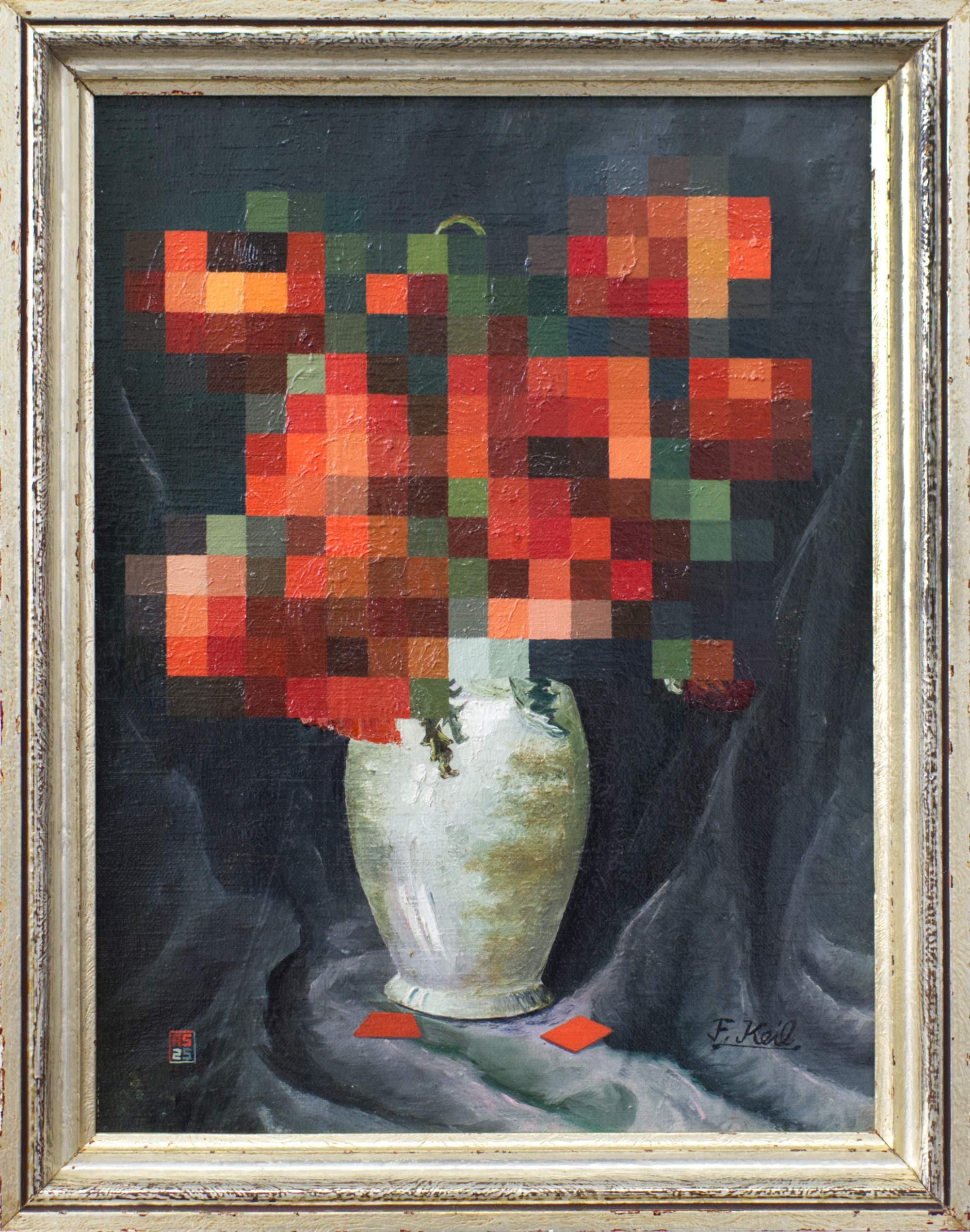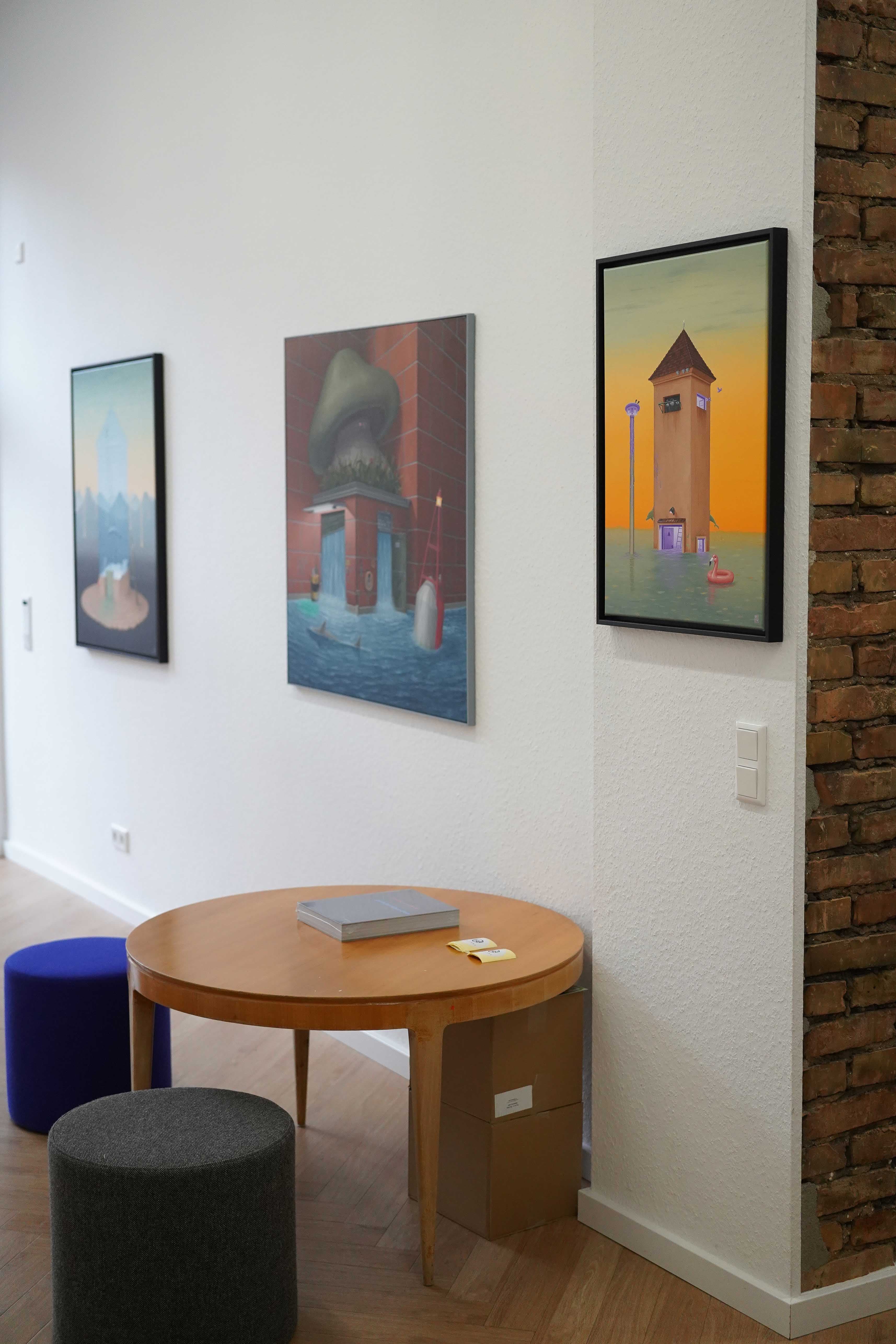Interview with André Schulze
André Schulze (born 1982), a Dresden painter and former painting restorer, is a master student at the HfBK under C. Macketanz. He revives historical masterpieces. With technical brilliance and subtle humor, he dissects and transforms works by artists such as Caspar David Friedrich into surprising contemporary narratives. His paintings are a play of quotations and irony that create visual worlds of rare depth, inviting discovery between the lines.
You have taught yourself painting restoration over the last few years. This means that you are familiar with the inner workings of classical painting: the layers, pigments, and mistakes of the Old Masters. How does this knowledge influence your own painting? Do you see this transformation and reinterpretation as a form of deepest reverence for tradition?
André: I didn't become an artist and then study restoration; it was exactly the opposite. I've always been an artist, and restoration came naturally with my work with old paintings. Many of the paintings I buy are in poor condition. Since preserving these paintings for posterity was important to me, I taught myself painting restoration over the years. Restoration is a craft I need to create my art.
Tell us briefly how you got into art.
André: I think I've always been making art. I really started doing graffiti consciously when I was 12 or 13, in the mid-90s. Until I was in my early 20s, I was exclusively involved in the graffiti scene. Then, I became interested in art and graphic design, which led me to want to study art. I studied art from 2006 to 2011.

You travel through art history by reinterpreting old master paintings. What does this transformation mean to you, and how do you approach this rich heritage?
André: I often feel bad about painting over the original pictures because I think they're so great. The artists who created them painted brilliant works of art. The problem with these paintings, though, is that they're no longer in demand today. It's shocking how low the prices are for 19th-century paintings and older. There is an abundance of paintings that no one wants anymore. My approach was: As an artist, how can I bring a twist to modern times so someone who likes the paintings but finds them too old-fashioned would hang them in their living room? I find it exciting to connect the old world with the new.
You build an emotional bridge to the viewer. You often use humor and irony to do this. Can you tell us more about that?
André: In recent years, I have developed two approaches. One is to change the content of the image. I add something that wasn't there before, like someone holding a smartphone instead of a book or a car driving in the background. The second approach is more conceptual. The content of the image isn't as important. I change the image as an object. For example, I paint over flat areas but still leave most of the original image visible.
What are you trying to achieve? Is it about stimulating discourse on art history or making contemporary art great, like the famous works of Caspar David Friedrich?
André: I'm interested in linking old images with contemporary subjects. For example, I pixelate a flower image and think, "What would happen if I did the same with a Caspar David Friedrich?" How would that look? I always try to add something from our time, whether it's pixelating, altering the colors, or adding something humorous. I consider which idea works best with which image. Sometimes I have an image and look for the right idea, sometimes I have a great idea and look for the image.

What inspires you? Where do you get these ideas?
André: Social media and keeping my eyes open as I go through the world. Sometimes, I'll see an advertisement or a newspaper photo and think, "What if you applied this image editing to an old painting?" I look at a lot of graphic design and draw inspiration from other artists. For me, the appeal lies in transferring trendy topics or contemporary trends into the past to see what happens when something new is added to an image.
You have two series: the Vintage series, which involves painting on existing images, and the Contemporary series, which involves painting on white canvas. What holds this thematic diversity together for you?
André: I would say it's humor, irony, and wit. I want to convey positivity, the joy of creativity, and fun. I like hiding secret messages in my images and not taking myself too seriously. In particular, my architectural images from the Contemporary series have often been interpreted more profoundly than intended. For me, it was often about the joy of painting and hiding little clues. I hope viewers recognize the connection between the images and understand my perspective. The vintage images are much freer in concept, while the architectural images are what I've been preoccupied with for a long time.
These are two very different approaches. We're excited to hear what viewers have to say. Thank you very much, André!
Recorded October 31, 2025.
